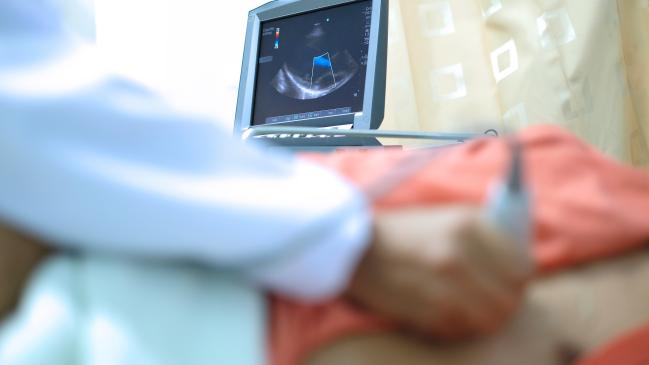Similar Outcomes in Men and Women After Transcatheter Tricuspid Interventions
There was, however, a difference in some predictors of who would benefit, particularly variables related to RV-PA coupling.

(UPDATED) Men and women have different underlying causes of severe tricuspid regurgitation (TR), but transcatheter interventions can successfully be performed in both sexes and result in similar survival out to 2 years, according to the results of an observational study.
Researchers also identified several predictors of mortality, noting that NYHA functional class, tricuspid annulus plane systolic excursion (TAPSE), which is a measure of right ventricular function, and mean pulmonary artery pressure (mPAP) identified patients most likely to survive the procedure.
“It’s still a relatively new field,” senior investigator Volker Rudolph, MD (Heart and Diabetes Center North Rhine-Westphalia, Germany), told TCTMD. “As an overall cohort, these patients have a lot of comorbidities, so you’re always trying to make the decision—will there be a benefit if we do this procedure? It’s important for us to understand that. Of course, the procedure has such low risk you can do it virtually in anyone, but you want to only do it in patients who will benefit. We want to know who’s going to gain the most.”
While the predictors of survival weren’t too surprising, Rudolph said their study goes one step further in that they identified different thresholds for right ventricular-pulmonary arterial coupling, which is a measure how well the right ventricle has adapted to the resistance of the pulmonary arterial system. This is expressed as the ratio of TAPSE to mPAP.
“The lower the ratio, the worse the prognosis of the patient,” he said. “It should be around 0.80. If it gets lower, it tells you there’s a problem and the right ventricle tends to decompensate. We found that when looking at these parameters against the background of sex, the ideal cutoff to predict survival was very different between and women.”
The new study, which was led by Vera Fortmeier, MD (Heart and Diabetes Center North Rhine-Westphalia), was published online April 5, 2023, ahead of print in JACC: Cardiovascular Interventions.
Men More Likely to Have CAD
Transcatheter tricuspid valve intervention (TTVI), encompassing both repair and replacement of the tricuspid valve, is relatively novel compared with transcatheter treatment of the aortic and mitral valves, but there are a number of technologies in development for patients who can’t undergo surgery. Last month at the American College of Cardiology/World Congress of Cardiology (ACC/WCC) meeting, investigators presented results of the randomized TRILUMINATE Pivotal study showing that transcatheter edge-to-edge repair (TEER) safely and effectively treated patients with severe TR, a benefit that was driven by quality-of-life improvements.
To TCTMD, Rudolph said past studies have identified sex-related differences in the underlying etiology and prognosis of TR in its natural course. Men with significant TR are more likely to have concomitant coronary artery disease and often present with worse left ventricular function. Data also suggest that men fare worse with respect to survival at 10 years, the researchers say. To date, though, no study has looked at whether these comorbidities and TR etiology affect procedural success and long-term survival, potentially leading to differences in benefits by sex.
The group studied the outcomes of 386 women and 316 men with symptomatic severe TR treated with TTVI between 2016 and 2021 at multiple European centers. Men were more likely than women to have predominantly secondary ventricular TR (64.6% vs 50.0%), while women were more likely to have secondary atrial TR (41.7% vs 24.4%).
With ventricular TR, the right ventricle is dilated and/or dysfunctional, with the valve pulled into the ventricle, resulting in “tenting and tethering,” said Rudolph. On the other hand, “atrial regurgitation, where you just have a dilated annulus without tethering, which is seen as an easier morphology to treat, was much more common in women,” he said. “From these data, you might have suspected that procedural results might be better in women compared with men, but that wasn’t the case.”
Procedural success—defined as TR reduction by at least one grade—was 90.9% in women and 91.8% in men (P = 0.796). Mortality also didn’t differ, with 69.9% of women and 63.7% of men still alive 2 years after TTVI (P = 0.144).
Abdel Almanfi, MD (Baylor St. Luke’s Medical Center, Houston, TX), who wasn’t involved in the study, said patients with severe TR can be extremely symptomatic, with limited treatment options for those turned down for surgery. To date, no transcatheter tricuspid intervention is approved in the United States, but there are multiple options available in Europe, including devices focused on repair and replacement.
To TCTMD, Almanfi agreed that TR resulting from atrial enlargement should be easier to deal with as an operator. “I would rather deal with a diseased atrium and a healthy ventricle than deal with a diseased ventricle, or both,” he said. “When the ventricle fails, it’s often late-stage and it might be difficult to get the ventricle back.” The new study, though, provides some reassurances that men and women fare equally well with TTVI despite different etiologies. “If you fix the tricuspid regurgitation, survival is the same after 2 years,” Almanfi told TCTMD. “Despite the different disease processes, it’s the same outcome, which is really interesting.”
It Can be Done, But Will it Work?
Dysfunctional right ventricular-pulmonary arterial coupling is usually measured by the ratio of TAPSE to systolic PAP (sPAP), but Rudolph pointed out that determining sPAP is prone to error in the setting of severe TR, adding that it is frequently underestimated. Instead, they used TAPSE/mPAP, which in their study was better able to predict the risk of death at 2 years compared than TAPSE/sPAP (AUC 0.672 vs 0.602; P = 0.011).
In a multivariate risk-prediction model, right ventricular function expressed by TAPSE was a very strong predictor of mortality in women but mPAP was a stronger predictor of death in men. Overall, TAPSE/mPAP was associated with mortality independent of baseline clinical, laboratory, echocardiographic, and hemodynamic variables.
The procedure has such low risk you can do it virtually in anyone, but you want to only do it in patients who will benefit. Volker Rudolph
Overall, TAPSE/mPAP levels were significantly higher in women than in men (0.650 versus 0.579 mm/mm Hg; P = 0.006), but the analysis revealed different sex-specific thresholds for the TAPSE/mPAP ratio to predict mortality. In women, a ratio less than 0.612 mm Hg was associated with increased risk of death at 2 years after TTVI compared with less than 0.434 mm Hg in men. Women with a TAPSE/mPAP ratio less than the identified threshold had a nearly 3.5-fold higher risk of death at 2 years, while men with a ratio less than 0.434 mm Hg had a twofold higher risk of death.
The different thresholds are important for determining who would benefit from treatment, say researchers.
“As we approach these patients, and as we move into individualized medicine, the [thresholds] are a huge difference,” said Rudolph. “If you’re below the cutoff, you’re at a higher risk of death, but if you use the same cutoff for men and women, you’ll come to the wrong conclusion.”
Right now, Almanfi only refers patients with symptomatic severe TR ineligible for surgery to centers participating in the clinical trials, but these new data are informative. “The ratio is really nice,” he said, noting that it provides clinical value by helping identify patients who might benefit most from TTVI. Even without the availability of transcatheter options, Almanfi said he’ll pay more attention to the prognostic information gleaned from TAPSE and mPAP.
Validation in Other Cohorts
In an editorial, Georg Nickenig, MD, and Atsushi Sugiura, MD, PhD (both University Hospital Bonn, Germany), say that these data align with those reported in the TriValve registry that also showed no significant difference in mortality between men and women treated with TTVI. Importantly, they point out, it remains unclear if TTVI improves the survival of TR patients in general. In the TRILUMINATE Pivotal study, there was no survival benefit with TEER.
The editorialists congratulate the study authors on showing the prognostic significance of right ventricular-pulmonary artery coupling based on sex, noting that right ventricular function and pulmonary circulation are interdependent. While these measures are easily obtained on echocardiography and with a right-heart catheterization, the sex-specific cutoffs will need to be validated in future analyses, they add.
“Given the inherent selection bias for TTVI, it would be imperative to investigate the value and predictive power of TAPSE/mPAP in an all-comers population with TR,” write Nickenig and Sugiura. “Only then could this parameter be used in the guidance of patient selection and the timing of intervention.”
Michael O’Riordan is the Managing Editor for TCTMD. He completed his undergraduate degrees at Queen’s University in Kingston, ON, and…
Read Full BioSources
Fortmeier V, Lachmann M, Körber MI, et al. Sex-related differences in clinical characteristics and outcome prediction among patients undergoing transcatheter tricuspid valve intervention. J Am Coll Cardiol Intv. 2023;Epub ahead of print.
Nickenig G, Sugiura A. Sex and TTVI: equality in efficacy. J Am Coll Cardiol Intv. 2023;Epub ahead of print.
Disclosures
- Nickenig reports honoraria for lectures or advisory boards from Abbott, Edwards Lifesciences, Medtronic, and St. Jude Medical.
- Sugiura reports honoraria for lectures from Abbott and Edwards Lifesciences.
- Fortmeier and Rudolph report no relevant conflicts of interest.





Comments